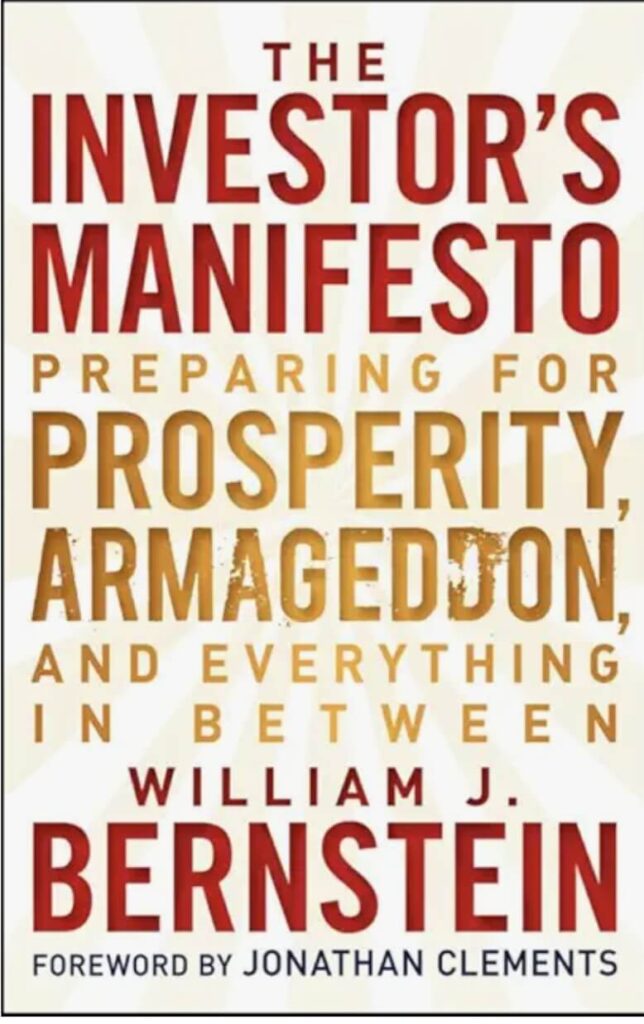In the world of finance, we like to believe that fundamentals — earnings, interest rates, productivity — drive outcomes. But as any seasoned investor knows, perception often matters more than reality. That’s where Masters of the Word comes in.
In this sweeping historical narrative, William J. Bernstein, author of acclaimed finance classics like The Four Pillars of Investing, makes a compelling case that communication technology has always shaped financial behavior, investor psychology, and the distribution of economic power. From clay tablets to social media, Bernstein shows how the tools we use to share information have defined who profits, who panics, and who rules the financial world.
It’s not a book about stocks or bonds — it’s a book about the silent force behind every boom, bust, and bubble: the way information spreads.
💡 Why This Book Matters to Investors
Markets don’t just respond to data — they respond to stories, narratives, and beliefs. And those beliefs are transmitted through media.
Bernstein’s thesis is straightforward but profound: every major communication revolution — from writing to the internet — has disrupted financial systems and altered who holds economic power. This isn’t just media history; it’s a masterclass in understanding the infrastructure behind investor behavior.
🧠 The Core Idea: Whoever Controls Information Controls Capital
Bernstein outlines how communication technologies — alphabetic writing, printing, mass media, and digital platforms — have constantly restructured economies. In finance, that means who gets the information first, and how quickly it spreads, determines who makes the money — or loses it.
He shows how:
⦁ The invention of writing gave rise to taxation, record-keeping, and early accounting systems — the DNA of modern finance.
⦁ The printing press enabled financial panics, speculative bubbles, and the first stock markets.
⦁ Radio and TV centralized financial messaging — and gave birth to mass investing (and mass herding).
⦁ The internet and social media have dismantled gatekeepers — empowering retail investors, accelerating bubbles, and fracturing trust.
From Mesopotamian ledgers to Elon Musk’s tweets, Bernstein draws a line connecting media innovation and financial volatility.
📚 Finance Themes That Run Through the Book
💸 Early Finance Was a Media Story
The earliest known form of writing — cuneiform on clay tablets — wasn’t poetry or law. It was accounting. Media didn’t just reflect finance; it was born from it.
📈 The Printing Press Fueled the First Speculative Manias
In the 17th century, as pamphlets and newspapers spread financial gossip across Europe, public participation in capital markets surged — and with it, the first recorded bubbles. Bernstein shows how greater access to information didn’t lead to smarter decisions — just faster and larger crowd behavior.
📰 Financial Media = Financial Power
From J.P. Morgan’s control of press leaks to CNBC shaping retail investor sentiment, media has long been used to influence markets. Bernstein explores how those with early access to new communication channels consistently gain an edge — and how those left behind often pay the price.
📱 The Internet: The Ultimate Democratizer — and Destabilizer
Bernstein stops just short of meme stocks and crypto, but his arguments apply directly: decentralized media has shattered traditional financial hierarchies. Retail investors organize on Reddit. Tweets move markets. Narrative dominates fundamentals.
🎯 Real-World Relevance for Investors Today
⦁ Narrative-driven markets: Understanding how communication technologies shape belief systems can explain why meme stocks boom, ESG investing surges, or bubbles inflate without clear fundamentals.
⦁ Information asymmetry: Every investor should consider how quickly they receive, process, and act on information — and how that compares to institutional players.
⦁ Media literacy = financial risk management: In a world where “the story” often trumps “the spreadsheet,” learning to read between media lines is as critical as reading balance sheets.
✅ Why Finance Readers Should Pick This Up
It Sharpens Your Market Instincts
You’ll start to see media headlines not just as news — but as part of a historical pattern that shapes sentiment and money flows.
It Connects Finance with Broader Power Structures
This isn’t just about stocks and bonds — it’s about how the architecture of communication determines who gets rich, who goes bankrupt, and who gets left behind.
It Explains Why We Keep Making the Same Mistakes
Bernstein’s historical deep dives make it clear: every time a new medium democratizes access to financial information, manias follow. Investors may change, but our brains — and our herd behavior — do not.
⚠️ Where It Might Not Fit Every Finance Reader
It’s Not a “How-To” Book
There are no portfolio tips, asset allocation models, or investment recommendations. This is history with a capital H — not prescriptive advice.
Modern Case Studies Are Limited
Published in 2013, the book doesn’t cover meme stocks, TikTok finance, or crypto — though its frameworks are perfectly suited to analyze those phenomena.
Requires Big-Picture Thinking
If your focus is short-term trades or technical analysis, this might feel like a detour. But for macro-minded investors, it’s gold.
💬 What Readers and Critics Say
“One of the most original finance-related books I’ve read — and it’s not even about finance directly.”
“Bernstein explains the mechanisms that move markets before CNBC even goes on air.”
“If you invest in a media-saturated world, you need this historical context.”
📈 Key Finance Takeaways
⦁ Media shapes investor sentiment — and sentiment moves markets.
⦁ The first-movers in new information systems often capture enormous financial upside.
⦁ Media democratization = opportunity + volatility.
⦁ Investor psychology is inseparable from how (and where) we get our information.
📌 Final Verdict: ★★★★☆ (4.5/5)
For readers of finance blogs, Masters of the Word may not teach you how to rebalance your portfolio — but it will teach you why markets move the way they do. Bernstein makes a compelling case that to be a better investor, you must understand how people consume information — and how it shapes mass behavior.
It’s history, yes. But it’s also behavioral finance, political economy, and media strategy — all rolled into one highly readable, perspective-shifting narrative.
In today’s media-saturated markets, Masters of the Word is a powerful reminder that it’s not just what you know — it’s how you hear it, who spreads it, and how fast it goes viral.




